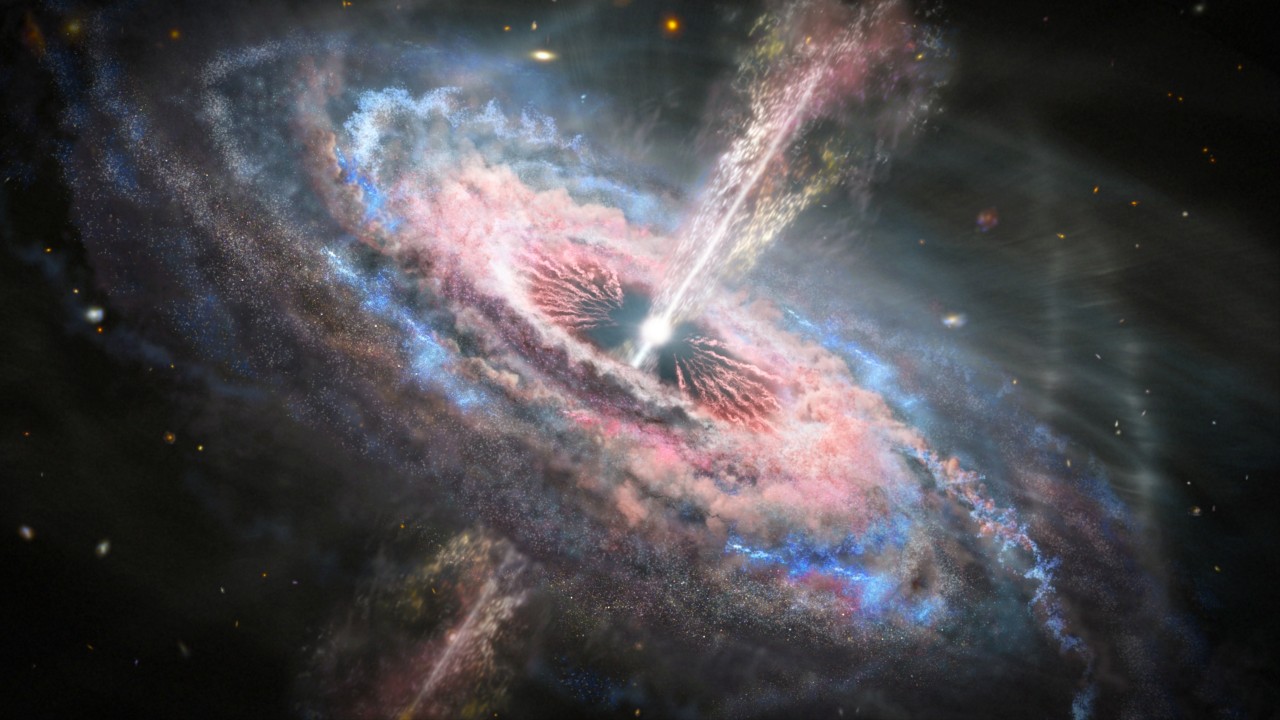
Scientists have spotted the brightest and fastest-growing quasar ever seen — a monster black hole that's devouring a sun's-worth of material every day.
The brightly burning object, named J0529-4351, weighs between 17 billion and 19 billion solar masses and is located 12 billion light-years from Earth — meaning it dates to a time when the universe was only 1.5 billion years old.
Related: James Webb telescope discovers the oldest, most distant black hole in the universe
Black holes are born when giant stars collapse in on themselves, and they grow by devouring all they encounter — be it gas, dust, stars, planets or other black holes.
Friction can cause the material spiraling into the maws of these gluttonous space-time ruptures to heat up, which emits light that can be detected by telescopes, turning them into so-called active galactic nuclei (AGN). The most extreme AGNs are quasars — supermassive black holes that are billions of times heavier than the sun and shed their gaseous cocoons with light blasts trillions of times more luminous than the brightest stars.
The quasar initially showed up in a 2022 survey by the European Space Agency's Gaia spacecraft, which has been mapping the positions and movements of the Milky Way's roughly 2 billion stars. However, as quasars often burn at least as brightly as stars, J0529-4351 was initially misidentified as one. (The word quasar itself is short for "quasi-stellar," because the two types of objects look so similar when seen through most telescopes.)
After searching for potentially misidentified black holes in the survey, the researchers behind the new study, which they published Feb 19 in the journal Nature, found J0529-4351 hiding in plain sight. Further observations by the Very Large Telescope (VLT) in the Atacama Desert confirmed that the bright object is a gigantic quasar, not a star.
By measuring the quasar’s perceived brightness and adjusting for its distance from Earth, the researchers estimated that the object was burning with the power of roughly 50 trillion suns (or 10^41 Watts).
This intense burn is owed to the fact that J0529-4351 is so big and consuming material so fast that it is very close to the Eddington limit — an upper limit on how bright an object can be given its size, according to the study authors.
The researchers hope that by studying the monstrous object they can both learn how quasars grew to such inexplicable sizes, as well as get better at distinguishing the monsters from among the brightest stars.
"Although their luminosity implies rapid growth, their existence is hard to explain," the researchers wrote in the paper. "When black holes start from the remnant of a stellar collapse and grow episodically within the Eddington limit, they are not expected to reach the evident masses in the time from the Big Bang to the epoch of their observation, which has triggered a search for alternative scenarios."







